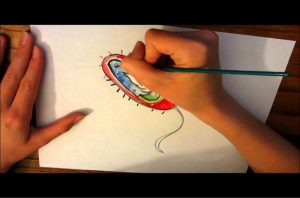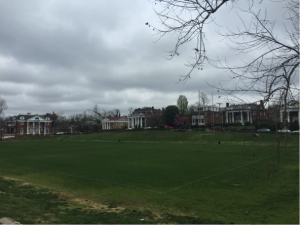Every time we lay down on the Lawn to study or sit on the bench by Clark, microorganisms surround us. They reside in gutters, soils, bicycle tires, bus seats, and more; microorganisms are everywhere. Many people in the Environmental Planning field think very little about the tiny critters that we cannot see. Since they are so miniscule, they are often forgotten about. Microorganisms seemingly play no part in planning. In reality, they make their homes in our new buildings and transportation centers; they’re the ones there to keep order balanced in the natural world. They break down materials and provide energy for other organisms.
My group, Microorganisms of Gutters, thought that we would connect the lives of microorganisms to important aspects of planning, which include transportation. Buses are constantly going through grounds, picking up people from various activities. My focus would be on examining the microorganisms found on buses. My plan was to take samples from the bus seats as well as the heavily trafficked bus floor. While I did expect to find a lot of dirt and germs, I did want to perhaps use the experiment as a way to track where UVa students had been. I could’ve seen if a person volunteering at the community garden had taken a bus to get lunch at Newcomb. I could see if someone walking through a muddy amphitheater had escaped the rain by jumping onto the bus. However, this sort of experiment would take a lot of pre-planning and access to equipment that my group could not get in time. Because we did not have time to grow and cultivate cultures, we changed our focus of research.
In keeping with the theme, we decided to slightly shift topics: we would still collect samples from grounds, yet we would only be collecting things like dirt, so we could simply use microscopes. Because we would not be able to take a picture of our findings, we decided to draw them on a sheet of paper, to at least create a visual. Again, our team came to a halt. We could not find access to labs after numerous attempts and were very quickly running out of time. After a chat with Professor Beatley, we then concluded that our research would be hypothetical. For my bus seat research, I predict that, if given the appropriate microscopes, I could’ve observed bacteria and other organisms that find their homes on grounds. This research would’ve been able to give one insight to where people on grounds are traveling and perhaps why they are traveling. In the future, I would have acted sooner in organizing materials so that I could have grown and observed an organism.
Post by Michelle Kislyakov


